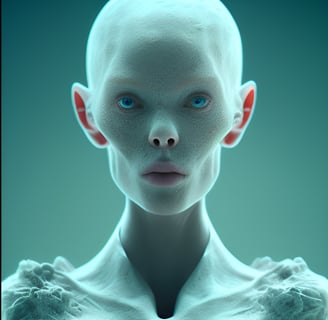Flash Forward: AI Transcends R&D in Designing Robotics
AI Building A Body for Itself Express
1/17/20242 min read


In the world of machine learning, new breakthroughs are constantly being made, pushing the boundaries of what was once thought possible. One such paper, recently published, has the potential to revolutionize the field and change the way we approach automation. In this article, we'll delve into the implications of this new paper and what it means for the future of machine learning and AI.
The Paper:
The paper, titled "Instant Evolution: AI Designs New Robot From Scratch in Seconds," was published in the Proceedings of the National Academy of Sciences and was authored by a team of researchers led by David Matthews. The paper describes a new AI system that is capable of intelligently designing robots from scratch within seconds, without the need for human intervention.
The system uses a fast design algorithm that bypasses the limitations of traditional evolutionary algorithms, allowing it to create innovative solutions without being constrained by human creativity. The AI runs on a lightweight personal computer and generates novel structures from scratch, unlike other AI systems that typically require energy-intensive supercomputers and massive datasets.
Implications:
The implications of this paper are far-reaching and have the potential to change the way we approach automation. With the ability to design robots from scratch in seconds, we can expect to see a significant increase in the speed and efficiency of manufacturing and production processes. This could lead to a significant reduction in costs and an increase in productivity, as well as the ability to produce a wider range of products.
The paper also highlights the potential for AI to be used in the design of other complex systems, such as medical devices and transportation infrastructure. This could lead to significant improvements in the quality of life for individuals and communities around the world.
However, the paper also raises important ethical and societal questions. As AI becomes more advanced and capable of designing complex systems, we must consider the potential consequences of these systems being used for malicious purposes. We must also consider the impact on employment and the potential for AI to displace human workers.
Conclusion:
The paper "Instant Evolution: AI Designs New Robot From Scratch in Seconds" represents a significant breakthrough in the field of machine learning and has the potential to revolutionize the way we approach automation. As we continue to develop and refine AI systems, it is important to consider the ethical and societal implications of these advancements. By doing so, we can ensure that the benefits of AI are shared by all and that we are using these technologies for the betterment of society as a whole.
Edited and written by David J Ritchie
